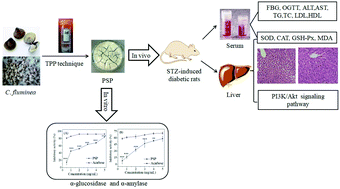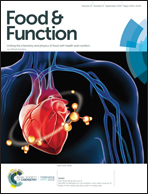Antidiabetic activity of a polysaccharide-protein complex from Asian Clam (Corbicula fluminea) in streptozotoxin-induced diabetic rats and its underlying mechanism
Abstract
The antidiabetic activity and potential underlying mechanism of a polysaccharide-protein (PSP) complex from Corbicula fluminea were determined in streptozotoxin (STZ)-induced diabetic rats. PSP exhibited inhibitory activity (in vitro) against α-glucosidase and α-amylase via a reversible competitive inhibition pattern with a stronger inhibition for α-glucosidase. Dietary administration of PSP had potential antidiabetic activities in vivo, which was evidenced by the fact that PSP alleviates body weight loss and organ injuries, reduced fasting blood glucose levels, elevated glucose tolerance, and ameliorated lipid metabolism and hepatic functions, as well as attenuated oxidative stress in STZ-treated diabetic rats. Furthermore, our results demonstrated that the antidiabetic activities of PSP were associated with the activation of the phosphoinositide 3-kinase/protein kinase B signaling pathway in STZ-treated rats. These findings supported the potential of PSP to be used as a functional ingredient in the preparation of functional and medicinal foods to inhibit diabetes mellitus and its complications.



 Please wait while we load your content...
Please wait while we load your content...